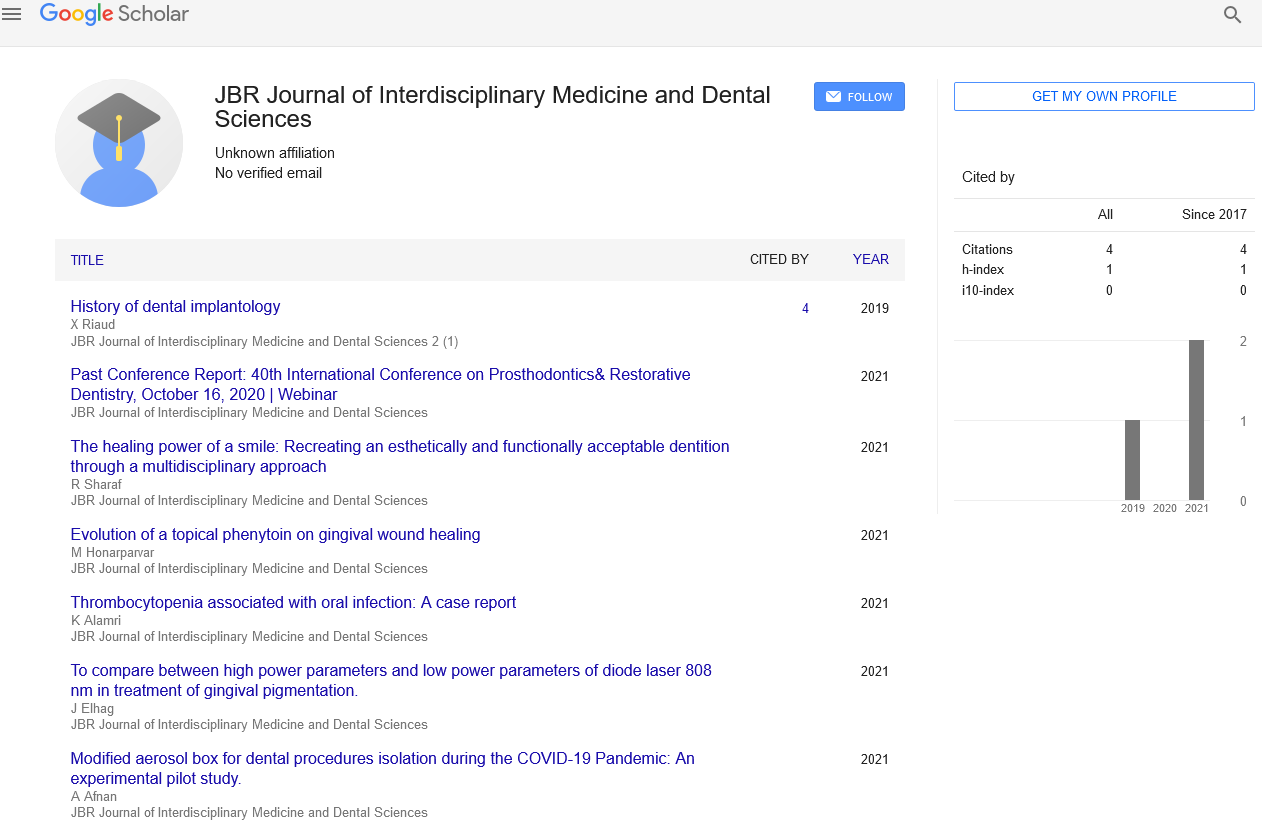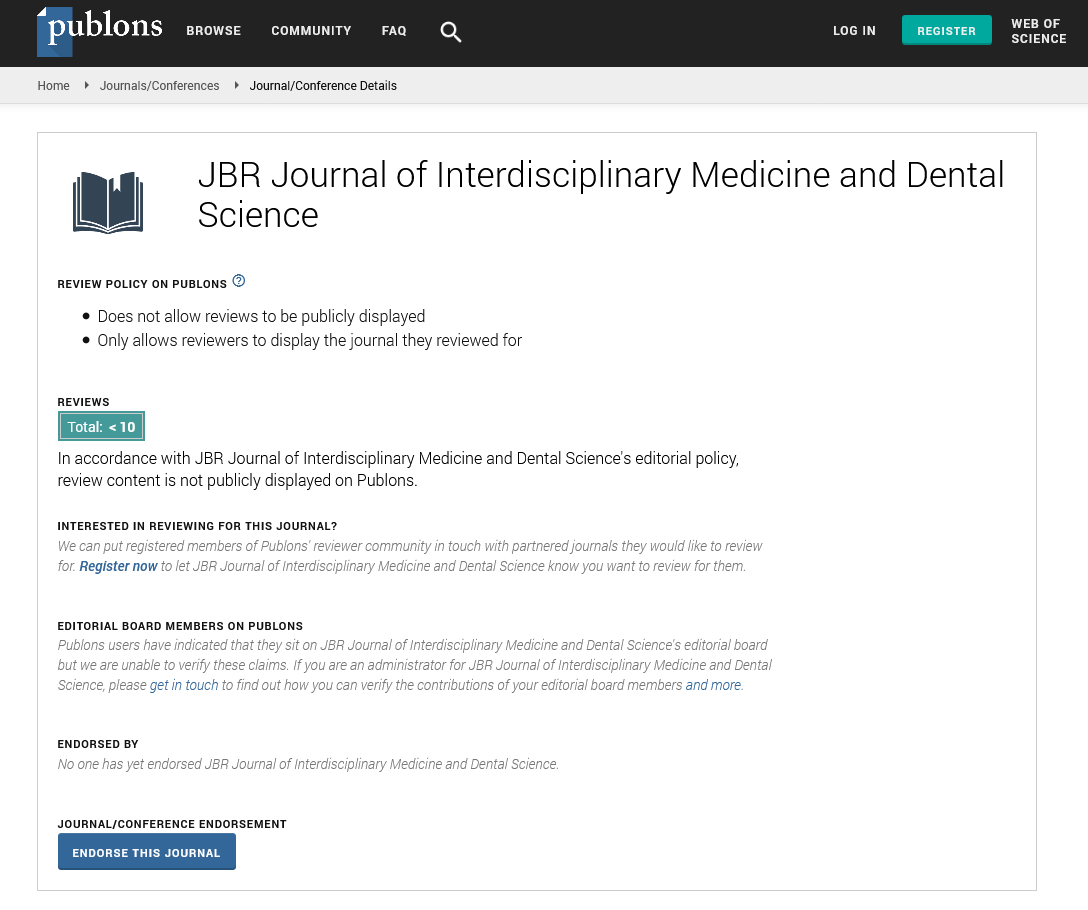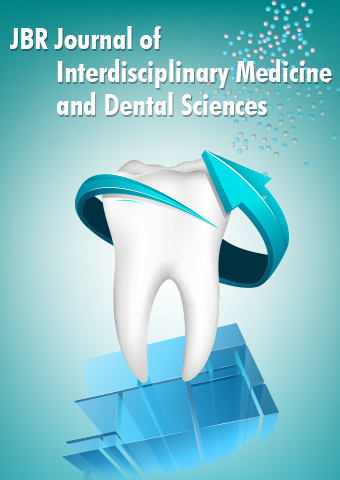Perspective - JBR Journal of Interdisciplinary Medicine and Dental Sciences (2022) Volume 5, Issue 4
Assessment of Cellular Responses to Oxidative Stress using Breast Cancer Cells
Ibrahim O. Farah*
Department of Biology, Jackson State University, Jackson, MS 39217, USA
Department of Biology, Jackson State University, Jackson, MS 39217, USA
E-mail: ibrahim.o.farah@jsums.edu
Received: 01-Jul-2022, Manuscript No. jimds-22-31008; Editor assigned: 04-Jul-2022, PreQC No. jimds-22-31008; Reviewed: 15- Jul-2022, QC No. jimds-22-31008; Revised: 22-Jul-2022, Manuscript No. jimds-22-31008 (R); Published: 29-Jul-2022, DOI: 10.37532/2376-032X.2022.5(4).66-67
Abstract
The combination and role of oxidative stress and antioxidants in vivo is still a matter of conjecture. Our objective for the present study was to expose MCF-7 breast cancer cells in vitro (as a chronic disease example) to aqueous and alcohol extracts and in combination with H2O2 as an oxidative stressor. Measurement of cell survival under various concentrations and mixtures was conducted using standard cell culture techniques, exposure protocols in 96 well plates and Fluorospectrosphotometry. Following cellular growth to 90% confluence, exposure to water (WE) and ethanol (AE) extracts of N. sativa and H2O2 was performed. Cell survival indices were calculated from percent survival using regression analysis. Mixtures other than AE+H2O2 showed possible interactions and loss of potency. In conclusion, N. Sativa alone or in combination with oxidative stress was found to be effective (in vitro) in influencing the survival of MCF-7 breast cancer cells, unveiling promising opportunities in the field of cancer chemoprevention and/or treatment.
Keywords
Oxidative stress• Nigella sativa• Hydrogen peroxide• MCF-7 breast cancer cells
Introduction
Oxidative stress plays a pivotal role in the mediation of many adverse progressive healthrelated events as well as many disease conditions. Oxygen-derived free radicals induce degenerative processes such as cancer and aging [1]. They are involved in many biological processes such as enzymatic reactions (mitochondrial respiratory chain), detoxifying enzymes of the cytochrome system, phagocytosis, prostaglandin synthesis as well as cytopathological reactions triggered by ionizing, visible and near visible UV-light. Free radicals damage DNA through oxidation of guanine basis via peroxyl or alkoxyl radicals that result in DNA strand breaks affecting cross-linking. Reactive oxygen species (ROS) damage DNA; however, the role of ROS in breast carcinoma may not be limited to the mutagenic activity that derives carcinoma initiation and progression [2]. The microenvironmental hypoxia that arises because of the development of solid tumors also acts to promote tumor growth. Complex interactions between tumor cells and macrophage hypoxia-regulated gene products and their associated pathways form the basis for the hypoxia promotion of tumorgenesis and malignant progression.
Description
Black seed supports metabolism, improves digestion, increase body tone, stimulates menstrual period, provide quick energy, increase sperm count and encourages hair growth. Recent studies showed its beneficial effects on the blood and blood homeostasis, Respiratory system, inflammation and fever, liver fibrosis and cirrhosis, Hepatotoxicity, Gastric secretions and ulcer, Antioxidant activity, Viruses and bacteria. Our intent was to study their cytotoxic/protective effects on these cells aiming at measuring the survival of MCF-7 breast cancer cells under the influence of these chemicals and their combinations by using fluorospectrophometric determinations of cellular respiratory activity as an indirect count for cell survival after a 48-hour exposure. The absorbance was measured with Fluoroskan Ascent FL (Thermo Labsystems Inc) at excitation/ emission wavelengths of 346/432 nm. Values obtained per concentration were converted to percentage cell viability. clean wide pan and was allowed to dry under the hood [3]. The methanol extract was also separated and allowed to completely dry under a separate hood. From the completely dried products from both extracts, I gram was re-suspended in de-ionized water and DMSO for water and alcohol extracts respectively (stock solution of 10,000 Bg/ml). Preparation of cell cultures followed standard inoculation and incubation protocols on 75 ml tissue culture flasks (Fisher Scientific). On reaching about 90% confluency, cells were washed with phosphate buffered saline (PBS), trypsinized with 10 ml of 0.25% (w/v) trypsin-0.03% (w/v) EDTA, diluted with fresh medium, counted, and seeded (2.5-5 x 103 cells/ml) in two sets of 96-well microtiter tissue culture plates for cytotoxicity assay. The microenvironmental hypoxia that arises because of the development of solid tumors also acts to promote tumor growth. Complex interactions between tumor cells and macrophage hypoxia-regulated gene products and their associated pathways form the basis for the hypoxia promotion of tumorgenesis and malignant progression. Modulation of HIF activity as a target, if correctly applied, may be therapeutically beneficial in tumor therapy [4]. As can be seen the combination of AE and H2O2 showed death curves with the strongest dose-response relationship as based on the survival parameters. The AE+H2O2 combination showed a very sharp dose-dependent decline of cell survival starting at the low concentration of 1.95 Bg/ml. Based on surviving population size; initial effective concentrations; and cell death end points, AE showed the lowest resistant population; the lowest effective concentration; and the lowest cellular death end point [5]. The effectiveness of other products in descending order is AE+H2O2, WE+2HO2 and WE. shows the pattern of the effectiveness of the mixture of WE+AE (Mix of 2), WE+AE+H2O2 (Mix of 3) in comparison to H2O2. Both mixtures were inferior to H2O2.
Acknowledgement
None
Conflict of Interest
No conflict of interest
References
- Worthen DR, Ghosheh OA, Crooks PA et al.The in vitro anti-tumor activity of some crude and purified components of blackseed, Nigella sativa L. Anticancer Res. 18, 1527-32(1998)
- Sayed MD. Traditional Medicine in Health Care. J. Ethnopharmacol. 2, 19-22(1980).
- Sipe HR, Jordan SJ, Hanna PM et al . The metabolism of 17 beta-estradiol by Lactoperoxidase: a possible source of oxidative stress in breast cancer. Carcinogenesis.15, 2637-2643(1994).
- Salim EI, Fukushima S. Chemopreventive potential of volatile oil from black cumin (Nigella sativa L.) seeds against rat colon carcinogenesis. NUT. Cancer. 195-202(2003).
- Agarwal ML, Taylor WR, Chernov MV et al. The p53 network. Journal of biological chemistry on line. mini-review. 273, 1-4(1998).
Indexed at, Google Scholar, Crossref
Indexed at, Google Scholar, Crossref
Indexed at, Google Scholar, Crossref


